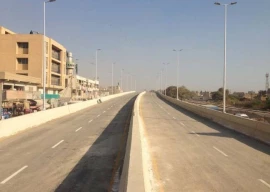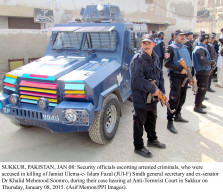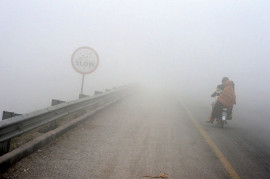
The city has received 90 more forensic experts in its district police to reach crime scenes promptly and make sure all evidences are preserved before it is too late.
The forensic division of Sindh Police were initially working with 127 experts but nearly 50 of them were in Hyderabad and Larkana divisions. With the additional 90 policemen trained to handle and examine forensic evidence, the workload within the department has been effectively balanced.
These experts have already started working in the city, under the supervision of their district police chiefs and investigations SPs. At least six vehicles and tool kits have also been provided to them by the forensic division.

“Before this training, it was very difficult for us to do all the work ourselves,” District East police chief DIG Munir Shaikh, who is also the forensic division’s former chief, told The Express Tribune. “We decided to train the existing police personnel of every district in Karachi to approach the crime scenes on time and collect evidence.”
He was happy to share that each of the six districts in the city will have their own group of forensic experts who will collect evidence and send it to the forensic division. “We are now only limited in terms of our laboratory resources but, in terms of manpower, we have no extra burden and are working satisfactorily.”
First forensic lab
The first forensic science laboratory in Karachi was established in 1958 at the Central Police Office. Later, the Criminalistics Division was created by merging the pre-Partition Fingerprint Bureau with the Florence Science Laboratory in 1983. Finally, the Criminalistics Division was renamed ‘Forensic Division’ in 2009.
Right now, the forensic division comprises units for audio visual analysis, digital forensics, monitoring chemical samples, investigate crime scenes, firearms and ballistics, forensic photography, automated fingerprint identification system and latent fingerprint.
Getting popular
Thousands of cases have so far been referred to the forensic division since 2009 — around 1,000 cases were referred to the forensic division in that year. In 2010, around 1,200 cases were referred. In the next few years, these numbers doubled with 2,500 cases referred to the forensics department in 2011 and 5,000 cases in 2012. In this year, 8,000 cases have so far been referred to the forensics division.
“A majority of the cases referred to us are of target killing,” said a senior officer of the forensics division, adding that they are doing their job better as compared to the past and have been able to dispose of most cases referred to them.
In the future, the officer hoped to invite foreign delegations and upgrade the lab equipment.
The district police personnel, who have been trained in forensics, are only working in this area. An officer, of at least a sub-inspector rank, will be the team in-charge when they visit a crime scene.
“Practice makes perfect and we are learning day-by-day because we were trained only for 15 days,” said a trained forensic district police officer, Aslam. “Sometimes, we call our trainers to get help but we are hopeful that we will do without them if we continue with this practice.”
Published in The Express Tribune, December 2nd, 2013.























COMMENTS (2)
Comments are moderated and generally will be posted if they are on-topic and not abusive.
For more information, please see our Comments FAQ